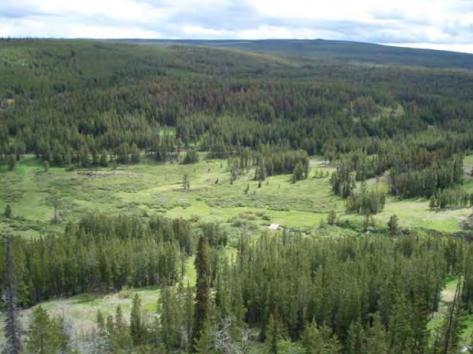VANCOUVER — Taseko Mines (TSX: TKO; NYSE-MKT: TGB) is certain Natural Resources Canada (NRCan) used the wrong project design in assessing the tailings storage facility at the proposed New Properity mine, a fundamental error that led the project’s environmental reviewers to incorrectly conclude a significant volume of tailings would leak into the environment.
And since those purportedly incorrect conclusions form the basis of the report that federal Environment Minister Leona Aglukkaq is now using to decide whether the mine should get a green light, Taseko is moving to get the findings struck from the report.
The Vancouver-based company has commenced a federal judicial review to determine whether NRCan failed to consider a liner that Taseko has planned for the tailings storage facility. Taseko contends that instead of its model — a tailings storage facility with a low-permeability, compact soil liner — the government agency looked at a design without a liner and determined tailings would readily leak into the surrounding overburden and fractured bedrock.
NRCan then passed its findings onto the New Prosperity review panel, which concluded the tailings facility would have an adverse environmental impact on fish, fish habitat, wetlands and aboriginal interest in the area. In its report, the panelists said Taseko “underestimated the volume of tailings pore water seepage,” and that this seepage would contaminate nearby Fish Lake and harm the fish in the Upper Fish Creek system.
Those concerns over harm to fish habitat were fundamental to the panel’s finding that New Prosperity would harm the environment in a way that would not likely be mitigated. The panel’s report is intended to inform the federal government’s decision on whether to allow the mine.
After fighting to earn a permit for New Prosperity for four years, it’s no surprise Taseko is speaking out.
“Taseko is asking the court for a declaration that certain panel findings relating to seepage and water quality be set aside, and that the panel failed in certain respects to comply with the principles of procedural fairness,” Taseko said in a news release. The company used stronger words in the court application, arguing the panel “based its decision on an erroneous finding of fact that it made in a perverse or capricious manner, or without regard to the material before it.”
The filing sets off another fight in what has become a long battle over whether Taseko should be allowed to build an open-pit copper–gold mine at the site, which is located 125 km southwest of Williams Lake in central B.C. Local First Nations are vehemently opposed to the plan, and their contention that environmental damage from the mine would destroy their way of life in the region has played an important role in the proceedings.
This is Taseko’s second attempt to earn approval for the mine. In its first go Taseko proposed to drain Fish Lake, also known as “Teztan Biny,” because the lake was too close to the proposed pit. Provincial regulators approved the project but the federal government said no, saying the demise of Fish Lake represented an adverse impact.
So Taseko went back and redesigned the mine to save Fish Lake, a change that added $300 million to the project’s price tag. If approved, it is now expected to cost over $1 billion to build the New Prosperity mine.
In September 2012 Taseko submitted its new plan for environmental review. The public hearing portion of that review took place this summer, with three independent panelists hearing from Taseko, First Nations, area residents and countless groups with opinions on New Prosperity. Taseko spent most of its hearing time explaining the reams of technical information around mine design and impact.
Only after the process was complete and the panelists’ report made public did Taseko say it realized NRCan’s opinion on the tailings storage facility was based on “faulty information.”
“At the panel hearings . . . there was never any reason to believe that an agency of the government of Canada could err so fundamentally as to apply its modelling to the wrong project design,” Taseko states. “It was only upon reading the panel’s report and in particular the panel’s inexplicable reliance on the evidence of NRCan that Knight Piésold came to identify the extraordinary error that was made by NRCan and in turn the panel.”
The company informed the Canadian Environmental Assessment Agency (CEAA) of the issue. The CEAA asked Taseko for further information, which Taseko provided. The company has not received a response and says it had to file the judicial review application to comply with a 30-day time limit. The CEAA and NRCan have not yet said anything publicly on the issue.
On news of the court filing, Taseko’s share price lost 2¢ to close at $2.08.


Be the first to comment on "Taseko heads to court to shelve New Prosperity panel findings"